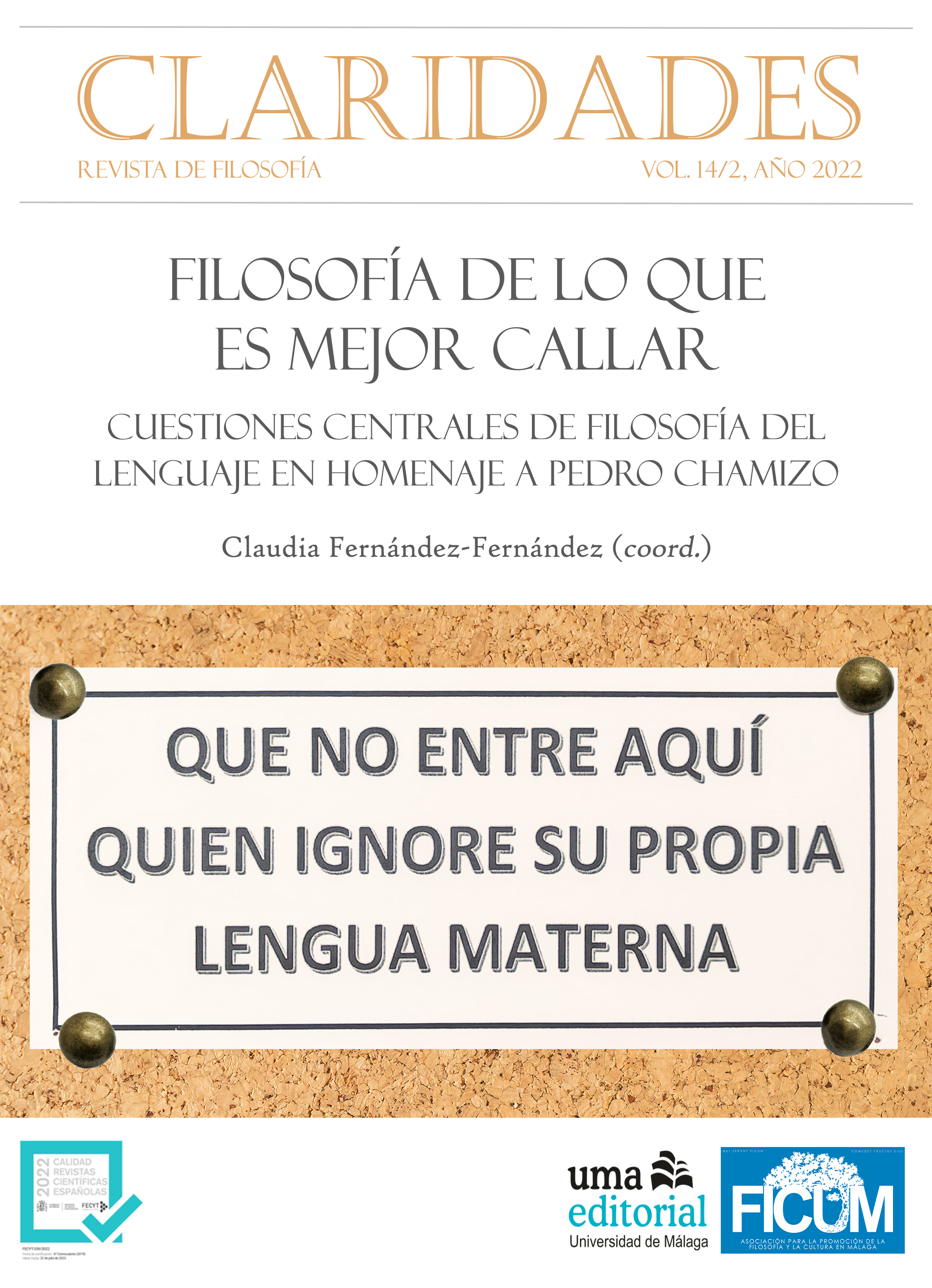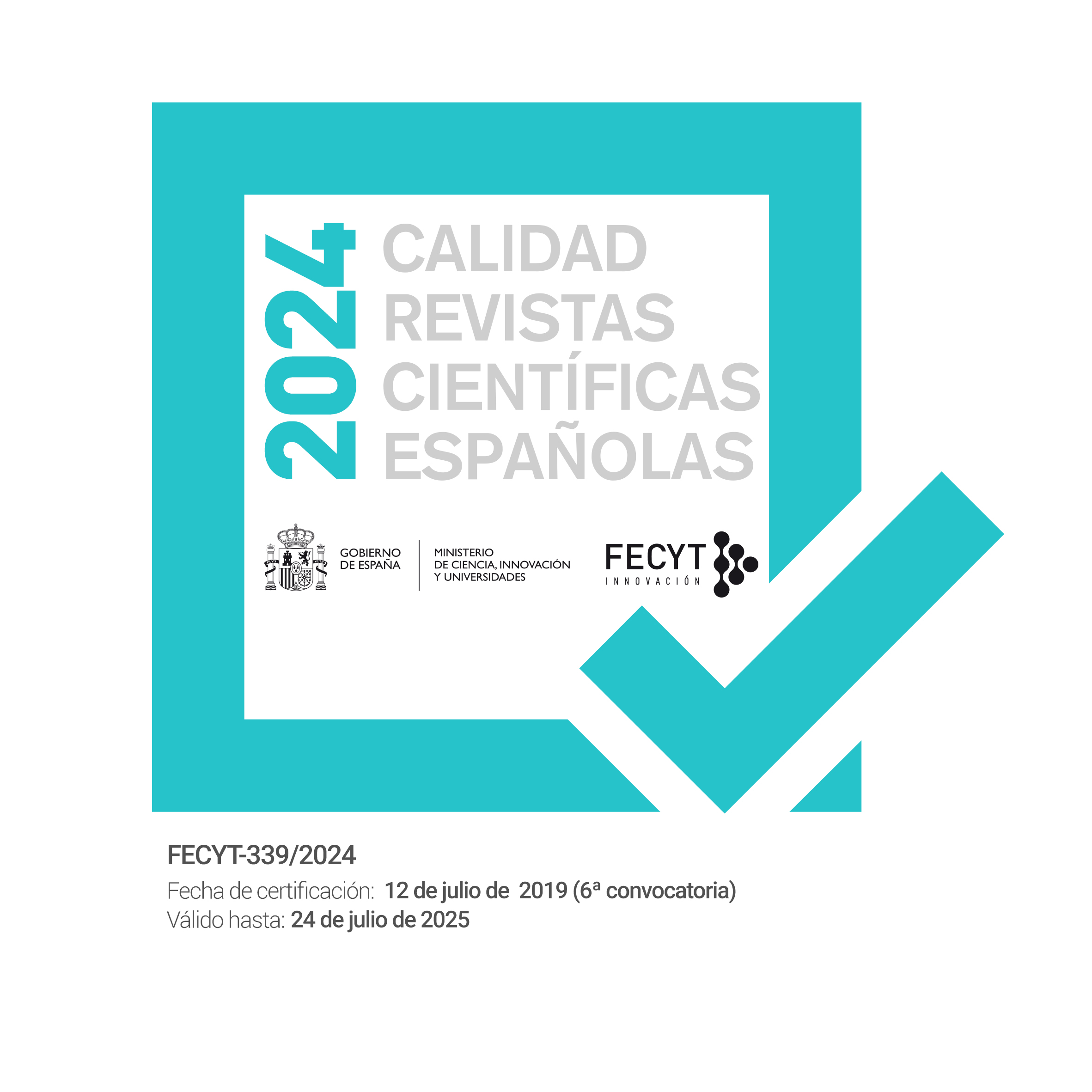The Idea of Actualidad/Actuality in Zubiri and in the Dynamics of His Metaphysics
DOI:
https://doi.org/10.24310/Claridadescrf.v14i2.12872Keywords:
Metaphusics, Zubiri, Actuality, Being, Time, TranslationAbstract
In the year 2020, Pedro J. Chamizo Domínguez published two studies, one in English, the other in Spanish, focused on the problem of translating the English noun «actuality» to multiple European languages. He argued that, as a result of some semantic change in their evolution, two languages-- let us say English and Spanish-- share at least one of the meanings of their signifier, but they differ with respect to the other meanings. This difference in meaning (present in all Romance languages and German) make translation difficult. The present study offers a concrete, significant application of Chamizo´s thesis by following his example through an analysis of the English word «actuality». We examine the use of this word in the English version made by us of Xavier Zubiri's 1968 metaphysics course Estructura dinámica de la realidad [Dynamic Structure of Reality]. Here we show that Zubiri compels us to employ the word «actuality» to translate his Spanish word «actualidad» for reasons suggested by Chamizo. Yet in addition, such a translation obeys three concrete related purposes, which thanks to Chamizo makes Zubiri's metaphysics clearer : (1.) to distinguish «reality» from «being», a basic premise of Zubiri's 1968 treatise, On Essence, (2.) to define the concept of «structure», and (3.) to conceptualize time and its relationship to being, vis-à-vis Heidegger's Being and Time.
Downloads
Metrics
Publication Facts
Reviewer profiles N/A
Author statements
Indexed in
-
—
- Academic society
- N/A
- Publisher
- Asociación para la promoción de la filosofía y la cultura en Málaga (FICUM) y UMAEditorial
References
Orringer, Nelson R. (2003): «Translator’s Introduction», en Zubiri, X.: Dynamic Structure of Reality, Autor (traductor), Urbana, Illinois, and Chicago: University of Illinois Press, pp. IX-XXI.
Chamizo Domínguez, P. J. (2020): «“Actuality”: un término filosófico de traducción con traducción problemática», Estudios Filosóficos, LXIX, pp. 47-67. Abreviado en 2020C, o sea, artículo en castellano.
Chamizo Domínguez, P. J. (2020): «Partial Semantic False Friends and the Indeterminacy of Translation in Philosophical Texts», en K. Allan, ed., Dynamics of Language Changes, pp. 141-54, Springer Nature Singapore
Pte Ltd, https://doi.org/10.1007/978-15-6430-7_9, abreviado en 2020I, es decir, artículo en inglés.
Dainton, B. (2017): «Bergson on Temporal Experience and Durée Réelle», en Phillips, I, ed., The Routledge Handbook of Philosophy of Temporal Experience, Boca Raton, Fl.: Routledge. DOI: 10.4324/9781315269641,
cap. 7. Heidegger, M. (1969): Sein und Zeit, 11a.ed., Tubinga: Max Niemeyer.
Rohde, E. (1903): Psyche. Seelenkult und Unsterblichkeitsglaube der Griechen. Tubinga: J. C. B., Mohr (Paul Siebeck), 2 tomos.
Unamuno, M. de (2005): Del sentimiento trágico de la vida en los hombres y en los pueblos y Tratado del amor de Dios. Autor (ed), Madrid: Tecnos.
Wuellner, B. (2012): Dictionary of scholastic philosophy. Fitzwilliam: Loreto Publications.
Zubiri, X. (1989): Estructura dinámica de la realidad. Diego Gracia Guillén, ed., Madrid: Alianza.
Zubiri, X. (1992): Sobre la esencia, 5ta.ed., Madrid, Alianza Editorial, Fundación Xavier Zubiri.
Zubiri, X. (2003): Dynamic Structure of Reality. Autor (traductor), Urbana y Chicago: University of Illinois Press.
Downloads
Published
How to Cite
Issue
Section
License
Esta revista provee acceso libre inmediato a su contenido bajo el principio de hacer disponible gratuitamente la investigación al público. Todos los contenidos publicados en Claridades. Revista de Filosofía, están sujetos a la licencia Creative Commons Reconocimento-NoComercia-Compartirigual 4.0 cuyo texto completo puede consultar en <http://creativecommons.org/licenses/by-nc-sa/4.0>
Es responsabilidad de los autores/as obtener los permisos necesarios de las imágenes que están sujetas a derechos de autor.
Los autores/as cuyas contribuciones sean aceptadas para su publicación en esta revista conservarán el derecho no exclusivo de utilizar sus
contribuciones con fines académicos, de investigación y educativos, incluyendo el auto-archivo o depósito en repositorios de acceso abierto de cualquier tipo.
La edición electrónica de esta revista esta editada por la Editorial de la Universidad de Málaga (UmaEditorial), siendo necesario citar la procedencia en cualquier reproducción parcial o total.
















6.png)
